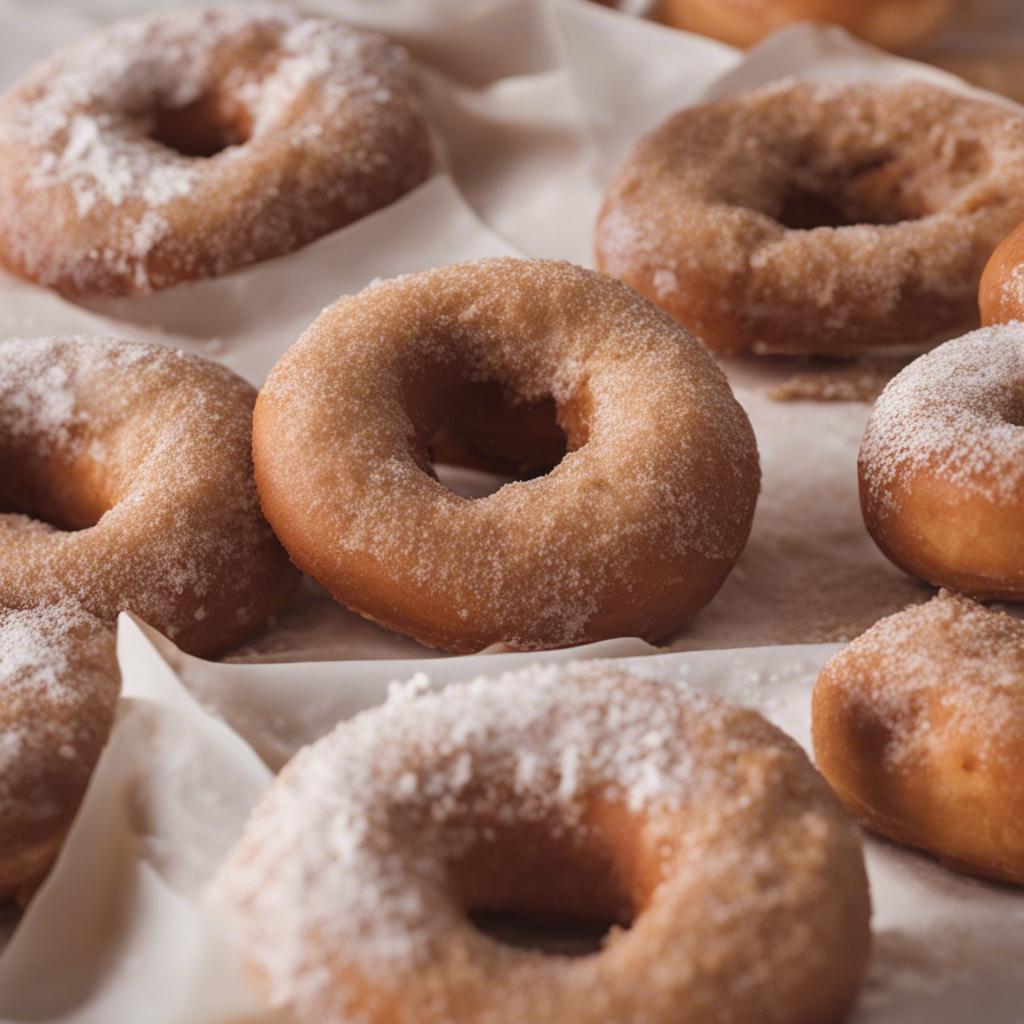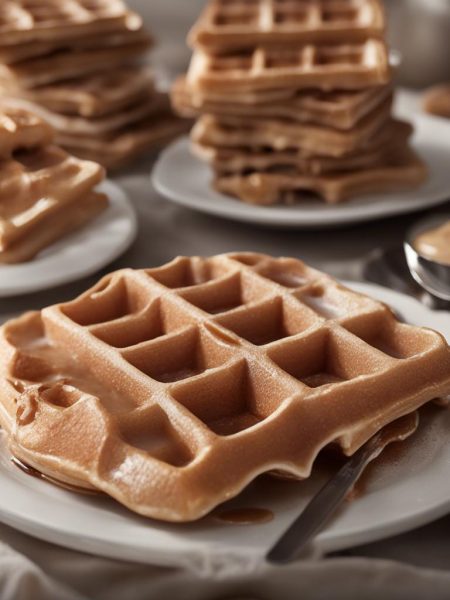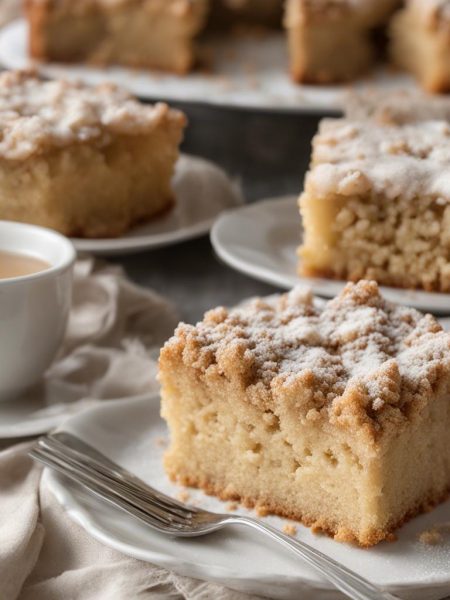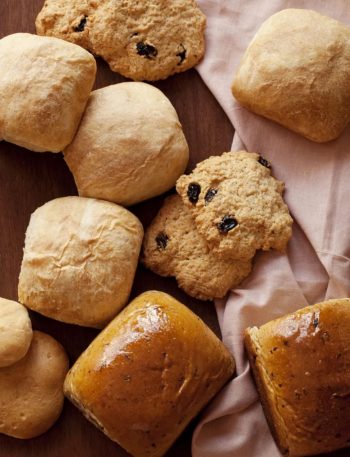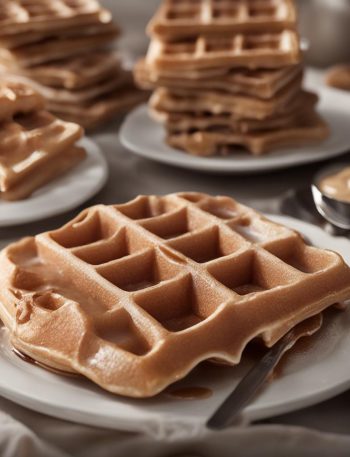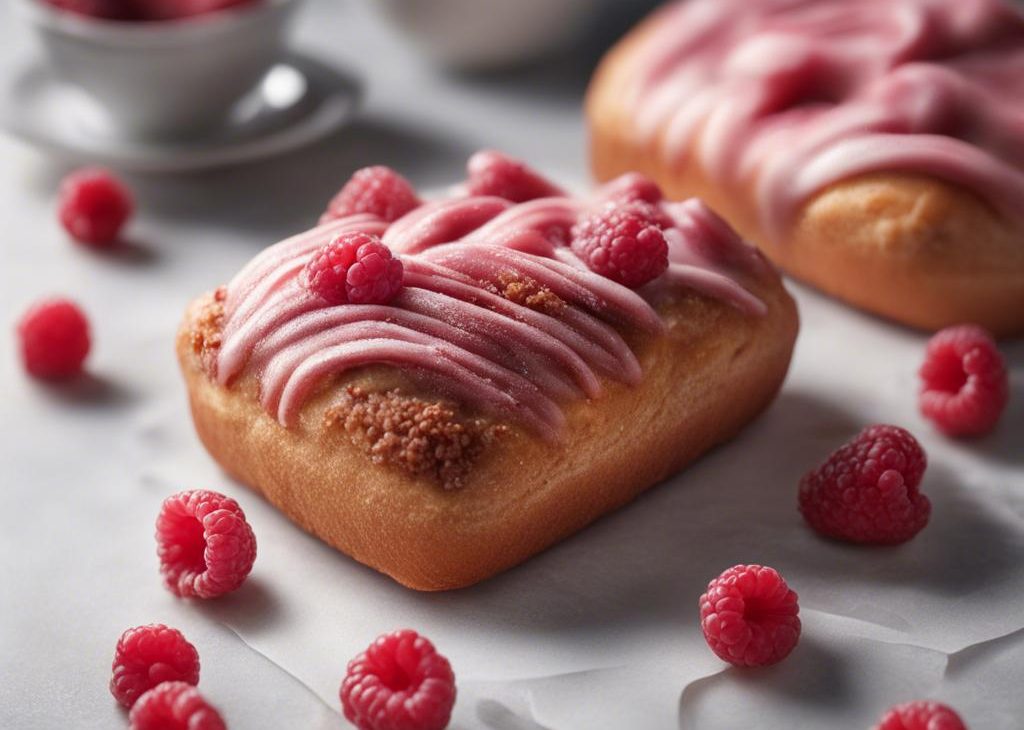
This raspberry twist bread comes together with a rich brioche style dough, raspberry jam, and sweet vanilla icing. The simple way we twist up the dough results in multiple buttery flaky layers. It tastes like fruity breakfast danish pastries!
This recipe is brought to you in partnership with Red Star Yeast.
Some mornings are for granola bars and some mornings are for THIS.
Welcome to the billionth way to twist up dough and call it breakfast. But unlike all the other sweet rolls on my blog, this melt-in-your-mouth raspberry twist bread combines flaky, crispy, and fruity with buttery, soft, and sweet. A generous drizzle of creamy vanilla icing seeps into every delicious pocket. Sliced warm and served cake-style, this twist impresses everyone who’s lucky enough to steal a taste. It is, without a doubt, always the prettiest treat in my annual spread of Easter brunch recipes.
This breakfast bread is texture paradise channeling the flakiness of breakfast pastries but with half the work. How’s it possible? The secret is in the way we twist the dough. And even though that hypnotizing twist looks complicated to replicate, I swear it COULD NOT BE EASIER. And today I’m showing you how.
This Requires a Rich Dough
There are two main types of dough: lean dough and rich dough. We distinguish between the two based on the amount of fat present. Dough that’s prepared with less fat is called lean dough and yields crusty bread like homemade bagels and pizza dough. There’s less fat in these recipes, so they aren’t as soft. Rich dough incorporates fats like eggs, milk, and butter which guarantee a soft and supple dough, one that promises indulgent cinnamon rolls and breakfast pastries. For even more information about baking with yeast be sure to reference my Baking with Yeast Guide before you begin.
Raspberry Twist Bread Ingredients
The dough we’re using for this raspberry bread is a scaled down version of my overnight cinnamon rolls and my Nutella babka. Use the same 7 ingredients that most rich dough requires.
For today’s raspberry bread, we’ll also use raspberry preserves or jam and fresh raspberries. If using frozen raspberries, do not thaw before using.
What Kind of Yeast to Use?
Behind every great bread dough is a great yeast—it’s simply the workhorse behind this whole recipe. Like usual, I use Platinum Yeast from Red Star. Platinum is an instant yeast that builds a stronger, taller, more voluminous dough. If you don’t have Platinum, Red Star Active Dry or Quick Rise Yeast works too! If using active-dry, your dough may take a little longer to rise.
Whether you’re a beginner baker or pro, it’s important to understand how yeast works. I urge you to read through my Baking with Yeast Guide where I answer many common yeast questions.
How to Make Raspberry Twist Bread
Our raspberry twist bread requires 2 rises:
- 1st rise: after the dough is made – 90 minutes
- 2nd rise: after the dough is shaped/twisted – 45 minutes
Here’s an overview of the steps:
The Best Pan to Use
We’re baking the raspberry twist bread in a springform pan; its high sides confine the twist so it rises straight up instead of straight out. When finished baking, carefully remove the rim of the springform pan for seamless serving.
No springform pan? No problem! A cast iron skillet with tall sides could work too. We want to make sure the twist maintains its coiled shape!
You’ll live for those pockets of raspberry between the flakes of buttery dough.
And for your next raspberry breakfast treat, try my raspberry sweet rolls!

Raspberry Twist Bread Recipe
Description
This melt-in-your-mouth raspberry danish twist bread combines flaky and crispy, fluffy and soft, buttery and fruity. A generous drizzle of creamy vanilla icing seeps into every delicious pocket.
Ingredients You’ll Need
Instructions
- Place the yeast and sugar in the bowl of a stand mixer fitted with a dough hook or paddle attachment. Or, if you do not own a stand mixer, a regular large mixing bowl. Heat the milk on the stove or in the microwave until warm to touch, about 110°F (43°C). Pour warm milk on top of yeast/sugar. Whisk gently to combine, then loosely cover with a clean kitchen towel and allow to sit for 5-10 minutes. The mixture will be frothy after 5-10 minutes.
- Add the butter, egg, flour, and salt. Beat on low speed for 4 minutes. Dough will be soft.
- Keep the dough in the mixer and beat for an additional 5 full minutes, or knead by hand on a lightly floured surface for 5 full minutes..) If the dough becomes too sticky during the kneading process, sprinkle 1 teaspoon of flour at a time on the dough or on the work surface/in the bowl to make a soft, slightly tacky dough. Do not add more flour than you need because you do not want a dry dough. After kneading, the dough should still feel a little soft. Poke it with your finger—if it slowly bounces back, your dough is ready to rise. You can also do a “windowpane test” to see if your dough has been kneaded long enough: tear off a small (roughly golfball-size) piece of dough and gently stretch it out until it’s thin enough for light to pass through it. Hold it up to a window or light. Does light pass through the stretched dough without the dough tearing first? If so, your dough has been kneaded long enough and is ready to rise. If not, keep kneading until it passes the windowpane test.
- Place the dough in a greased bowl (I use nonstick spray to grease) and cover with plastic wrap or aluminum foil. Place in a slightly warm environment to rise until doubled in size, about 90 minutes. For this warm spot, I suggest using the oven. Preheat to 200°F (93°C), then turn the oven off after preheating. Place the covered bowl inside and shut the oven door. This is your warm environment.
- Grease a 9-inch springform pan. Turn the risen dough out onto a lightly floured work surface, punch it down to release the air.
- Using a rolling pin, roll into a 12×16 inch rectangle. Spread jam evenly on top. If desired, dot randomly with raspberries. Tightly roll up the dough to form a 16-inch long log. Place the log on its seam. Using a sharp knife, cut the log in half lengthwise. I find a serrated knife works best. Criss-cross one half on top of the other half—forming an X. Twist the two together then coil into a circle. Carefully transfer to prepared springform pan. (I carefully pick it up using two flat spatulas!) Cover the twist with plastic wrap or aluminum foil, then allow to rise once again in a slightly warm environment until puffy, about 45 minutes.
- Adjust the oven rack to the lower third position then preheat oven to 350°F (177°C).
- Bake until golden brown, about 40-45 minutes. If you find the top is browning too quickly, tent with aluminum foil. Remove from the oven and allow to cool for 5 minutes. Meanwhile, make the vanilla icing by whisking the icing ingredients together until smooth.
- Carefully remove the rim of the springform pan. Drizzle with vanilla icing. Slice and serve. Cover and store leftovers in the refrigerator for up to 1 week.

